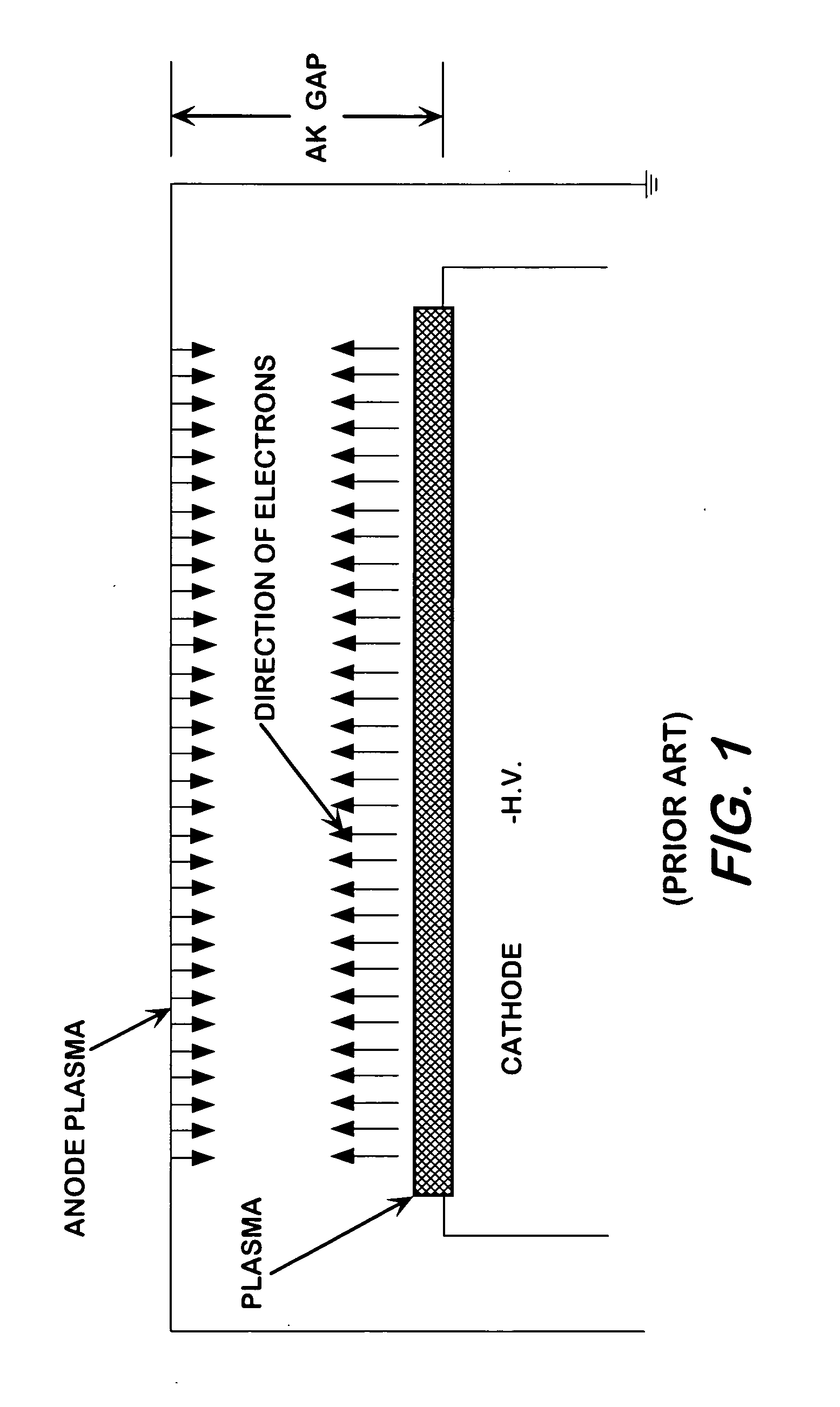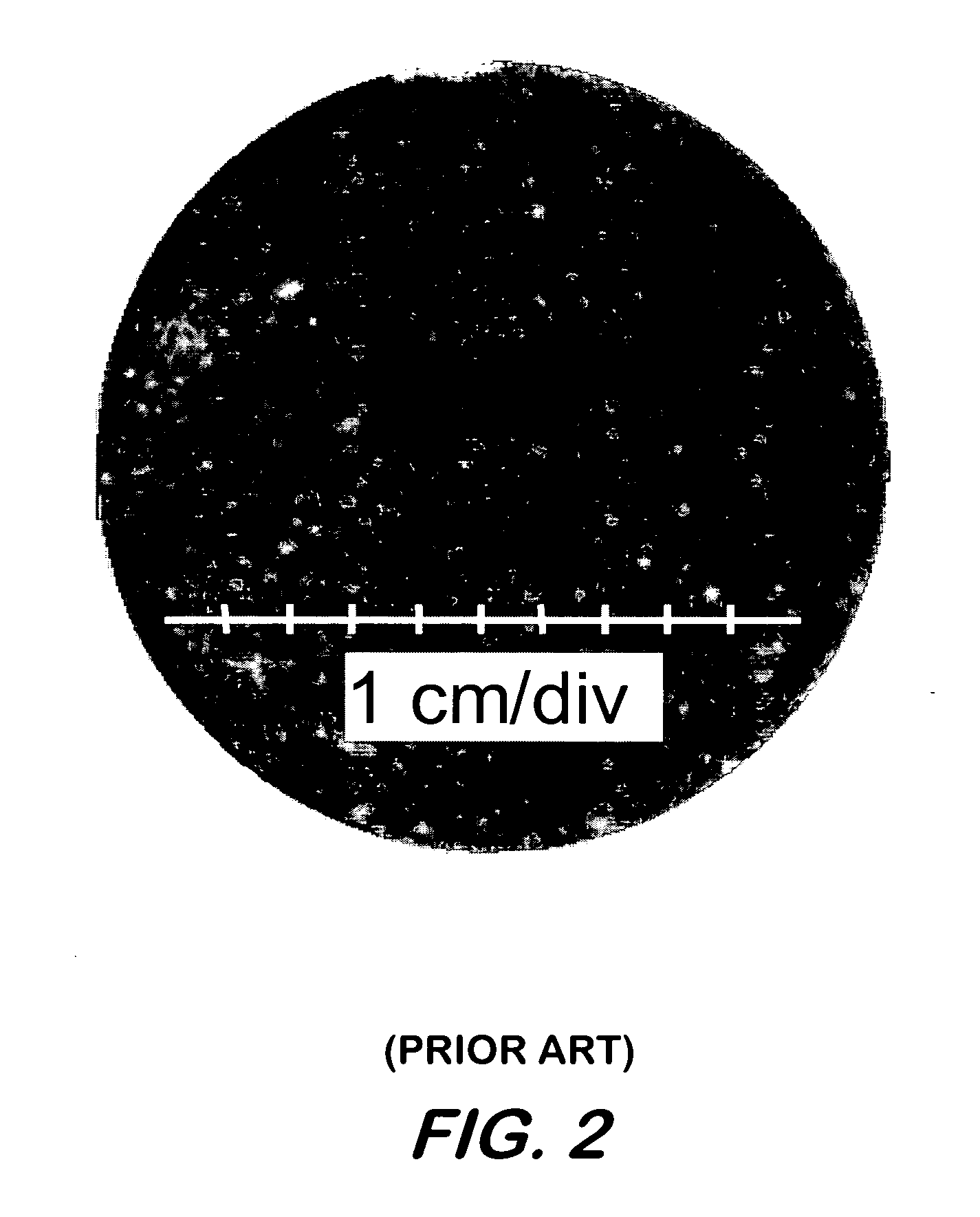High power diode utilizing secondary emission
a high-power diode and secondary emission technology, applied in the field of high-power diodes, can solve the problems of diode short circuit, diode impedance collapse, and inability to meet the requirements of high-power diodes, and achieve the effect of increasing the lifetime of the diodes
- Summary
- Abstract
- Description
- Claims
- Application Information
AI Technical Summary
Benefits of technology
Problems solved by technology
Method used
Image
Examples
Embodiment Construction
[0046] Referring now to FIG. 3a, a high power diode 10 includes a cathode 12 (the “primary emitter” as indicated), an anode 14, and a porous dielectric layer 16 spaced a selected distance from the cathode 12. Preferred cathode 12 materials include velvet, carbon fiber, and carbon cloth. Layer 16 is preferably a honeycomb ceramic as illustrated in FIG. 4.
[0047] Referring to FIG. 3a, a honeycomb slab is placed 2 mm above the emitter and supported by ceramic spacers at the edges. A suitable honeycomb material is cordierite with the bulk material dielectric constant of 6.3. The honeycomb consists of square pores with a pore size of 1.2 mm×1.2 mm with a wall thickness of about 0.2 mm. Honeycomb slabs of thickness of 2 cm and 5 cm were tested. The anode is placed about 5 cm away from the surface of the ceramic. FIG. 3b shows the axial electric field distribution across the diode for a slab 2 cm thick obtained from particle in cell (PIC) simulations (MAGIC, see above). This figure shows t...
PUM
 Login to View More
Login to View More Abstract
Description
Claims
Application Information
 Login to View More
Login to View More - R&D
- Intellectual Property
- Life Sciences
- Materials
- Tech Scout
- Unparalleled Data Quality
- Higher Quality Content
- 60% Fewer Hallucinations
Browse by: Latest US Patents, China's latest patents, Technical Efficacy Thesaurus, Application Domain, Technology Topic, Popular Technical Reports.
© 2025 PatSnap. All rights reserved.Legal|Privacy policy|Modern Slavery Act Transparency Statement|Sitemap|About US| Contact US: help@patsnap.com



